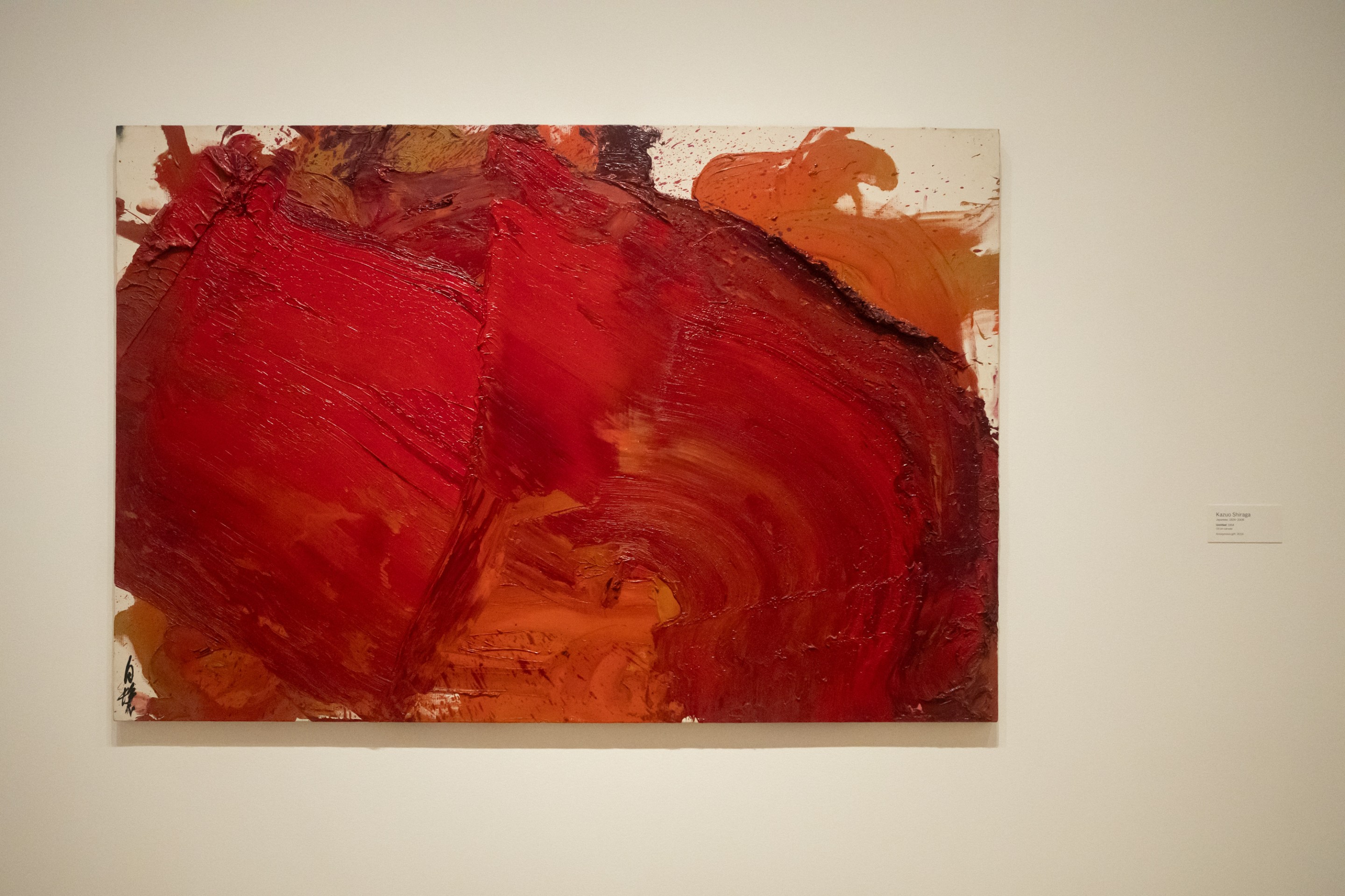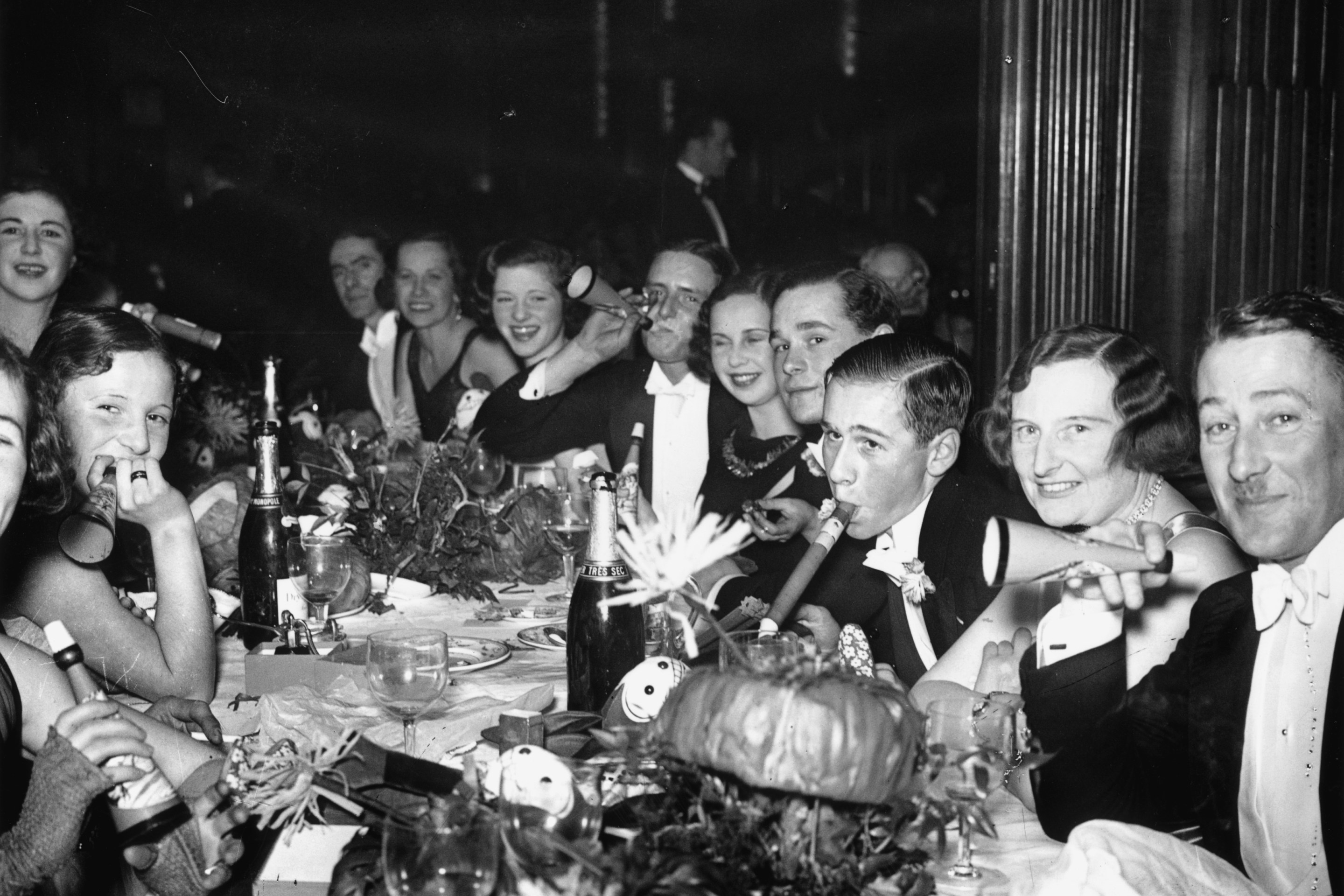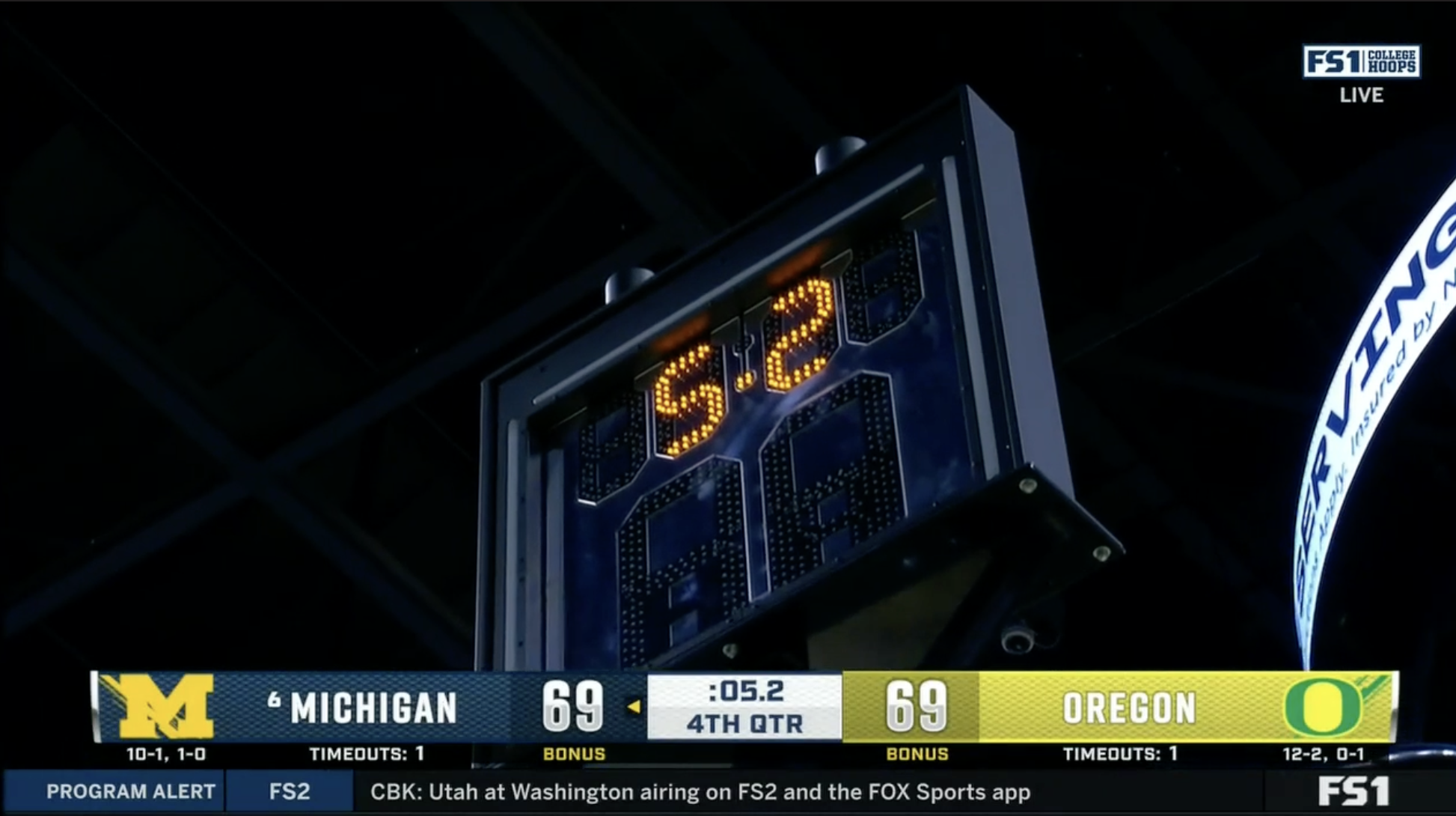It's a Monday afternoon and I'm at the Museum of Modern Art, sitting on the floor in Gallery 405. I've come to visit one of my favorite pieces in the museum, Untitled, by Japanese abstract artist Kazuo Shiraga. The gallery is busy today, with dozens of lanyard-wearing high school groups darting throughout and parents pushing fussy children around in strollers. This section of the museum features more abstract works, and the reactions from the visitors are mixed. A woman looks at a slashed canvas to my left—Lucio Fontana's Spatial Concept: Expectation—and I hear her say in Mandarin that she doesn't think that the work belongs in a museum. It's reminiscent of a critique we've probably all heard before—take this viral TikTok, where teens pose next to various works at a museum, the caption reading, "Standing next to modern art we think we could do."
At MoMA, where many of the works have accompanying placards that only list biographical information and no further context for the piece, it's not surprising when visitors glance at something and move on, confused. Abstraction doesn't explain itself as easily as the aesthetic grace of John Singer Sargent's The Wyndham Sisters or the technical wonders of Bernini's Apollo and Daphne. But our world is not built purely on lush landscapes and orthogonal lines. There are things that escape our eyes and our words. How, then, do we visualize them?
Around two years ago, I was pacing around the MoMA galleries by myself when I first came across Untitled. I've included a picture of the painting above, but no image can do Shiraga's work any justice. In-person, the experience is visceral. This disgusting chill went down my neck, every hair on my arms raised as I looked at the canvas. The painting resembles blood and gore, red paint lathered and layered with a haphazard violence that lives and breathes before you. Under the gallery lights, some sections of the paint have developed a wet sheen, the variations of pigments so sharply red that it almost hurts to look at. In the upper-right corner, where the colors have condensed into something a little darker, you can easily deceive yourself into seeing an oozing, crusted ridge of blood.
Untitled felt like pain and anger and passion and vengeance and all the other things that can make us see red melded into one canvas, an unexplainable entity sitting in the corner of a room in a museum filled with so many better-known works of art which historians have classified as masterpieces. This one called to me.
In the process of trying to find more information about Untitled, which was created in 1964, I learned that my special painting wasn't even the only nameless work Shiraga had made that year. Some of those Untitled paintings even bore a similar crimson appearance. There's a Sotheby's article that describes one of these works in dramatic, limiting fashion: "...among [Shiraga's] abstractive masterworks, a singular piece emerges: Untitled." The listing sold in November 2019, 11 years after Shiraga's death, for nearly $5 million. I'm not sure how he would react to that amount of money being exchanged for his painting. What I have contended with, instead, is why he would create this Untitled in the first place.
While Shiraga is memorialized to me in the form of this one canvas, his initial acclaim came from his performance art. As a member of the Gutai Art Association, he and his contemporaries navigated 1950s postwar Japan through experimental art techniques. If social conformity had led to the rise of fascism and wartime nationalism, then the Gutai and their avant-garde methods were rejecting the past with their originality.
Most notably, Shiraga caught international attention with his work Challenging Mud, a performance in which he rolled in dense amounts of natural materials to the point of injury. In interviews, he spoke of the damaged bodies he saw in Osaka as a conscripted soldier, blood and earth coating the skin of people begging for help. Later, Shiraga moved the needle once again when he began to paint with his feet, an exercise that enshrined the movements of his body onto the canvas. Often, he was drawn to the color "crimson lake," which he liked because "it somehow seemed to reek of blood." It's important to note that while themes of physicality, and thus violence, fill Shiraga's body of work, he never saw combat, instead tending to the wounded during his conscription.
It's been theorized that Shiraga, in a postwar society, was trying to understand heroism and masculinity in a Japan that had, at once, become both an abominable aggressor and a victim. By deploying his body, he was centering materiality, a topic which the Gutai manifesto expounds on:
Gutai art does not change the material but brings it to life. Gutai art does not falsify the material. In Gutai art the human spirit and the material reach out their hands to each other, even though they are otherwise opposed to each other.
To be honest, I'm still a little confused after reading parts of the manifesto. What I do know is that the abstract materiality Shiraga created with his sweeping movements brought this unsettling life into Untitled, transforming a mound of paint into something with an uncomfortable dimension.
As someone of Chinese-Taiwanese descent, the implications of a postwar Japan can feel complicated. When art historian Ming Tiampo, who Shiraga recognized as Chinese, first met the Gutai artist, he felt it necessary to tell her that he did not kill any Chinese people during World War II. I have read that Shiraga's paintings were not figurative in any way. But in the absence of absolute forms, the undulations of paint nevertheless turn into Rorschach tests, my mind trying to make sense of my gruesome fascination with Untitled.
Perhaps it's like watching a horror movie. Maybe Untitled puts these basic human feelings, this sense of red, into something even more undiluted than wartime photography or battle murals. As Susan Sontag wrote in her work Regarding the Pain of Others, "There is the satisfaction of being able to look at the image without flinching. There is the pleasure of flinching." I have spent hours trying to pull apart what this painting might mean, but in the end, maybe it’s just better to sit back and feel, unburdened by any plot or hidden metaphors, taking in the raw physicality instead.
I love Untitled, but I'm sure there are plenty of people out there who took a good look at that same canvas and decided it was stupid. I wouldn't be mad if they disagreed with me. As the Gutai tried to point out, conformity can become dangerous. A work is not inherently lesser because it feels unfamiliar or uncomfortable to some.
Back at MoMA, another woman walks up next to me. When she sees Untitled, she stops. For minutes on end, the two of us hover in a shared space in front of the painting. She stares ahead, walking closer, then further, neck craning up and down to take in the full height of the canvas. I wonder if this is her first time seeing it. I wonder if she, like me, is a returning guest, coming back to watch the material bind with the spirit.







